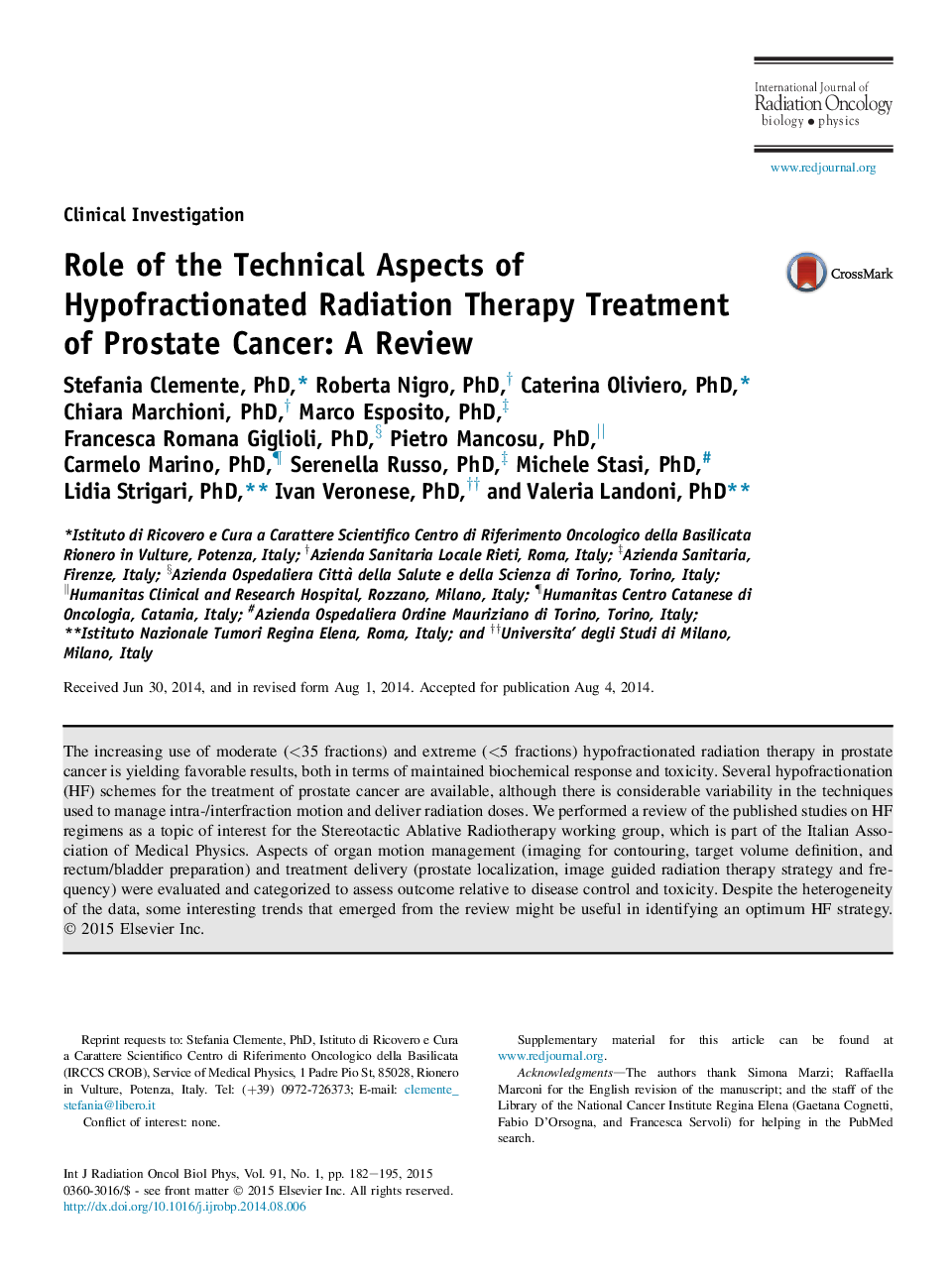| Article ID | Journal | Published Year | Pages | File Type |
|---|---|---|---|---|
| 8217883 | International Journal of Radiation Oncology*Biology*Physics | 2015 | 14 Pages |
Abstract
The increasing use of moderate (<35 fractions) and extreme (<5 fractions) hypofractionated radiation therapy in prostate cancer is yielding favorable results, both in terms of maintained biochemical response and toxicity. Several hypofractionation (HF) schemes for the treatment of prostate cancer are available, although there is considerable variability in the techniques used to manage intra-/interfraction motion and deliver radiation doses. We performed a review of the published studies on HF regimens as a topic of interest for the Stereotactic Ablative Radiotherapy working group, which is part of the Italian Association of Medical Physics. Aspects of organ motion management (imaging for contouring, target volume definition, and rectum/bladder preparation) and treatment delivery (prostate localization, image guided radiation therapy strategy and frequency) were evaluated and categorized to assess outcome relative to disease control and toxicity. Despite the heterogeneity of the data, some interesting trends that emerged from the review might be useful in identifying an optimum HF strategy.
Related Topics
Physical Sciences and Engineering
Physics and Astronomy
Radiation
Authors
Stefania PhD, Roberta PhD, Caterina PhD, Chiara PhD, Marco PhD, Francesca Romana PhD, Pietro PhD, Carmelo PhD, Serenella PhD, Michele PhD, Lidia PhD, Ivan PhD, Valeria PhD,
